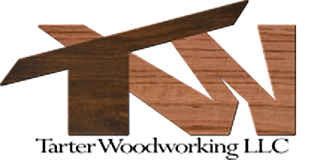How To
How to create an inlay using a Multiple Layer Inlay Stencil
General Instructions:
How To Create an Inlay Using a Multiple Layer Inlay Stencil (MLIS)
STEP #1: Pick out your inlay design wood and gather the tools.
This is the part of the inlay process that will always make your inlay creatively different and unique! Be very choosy about your wood selections for your inlay and have fun imagining grain direction and color. A creative inlay plan from the start is the key to creating a beautiful heirloom quality inlay. Use one of the stencil plates to choose your inlay pieces. Move around the plate over the wood until you find the perfect spot and then trace the hole cutouts with a pencil for reference.
STEP #2: Secure project material and cutout inlay pieces. *TIP – Re-saw small pieces from deeper wood to prevent breakage.
We recommend using our 2″ woodworker’s double sided tape to hold down your project wood and wood inlay stencils to the workbench or table. Our tape really holds well to make sure there is no movement of anything while you are cutting with your plunge router. Make sure your Router inlay kit is installed and centered for an optimal cut. We recommend the 9500 Router inlay kit made by Whiteside. It has a centering pin that allows for a more precise set up. Now, with the brass ring or collar removed from your router inlay kit, cutout each inlay piece by moving clockwise around the inlay stencil cutout in each plate.
***TIP – It is helpful to mark all your cutouts with reference numbers letters or directional arrows as needed to ensure proper direction and orientation, especially if you have a lot of strange looking pieces.
You may have to use the ban saw to Re-saw your inlay pieces from thicker lumber to ensure the pieces do not come loose while cutting them out of thin wood. This prevents breakage of smaller pieces because the tape does not have the strength to stop the small pieces from coming loose while cutting. We actually love this method because it allows us to cut smaller than usual inlay pieces and saves money vs. buying the 1/8 in. thick stock project wood.
STEP #3: Set up project board and create pockets.
Now we are ready to start making our inlay come to life! We will start by setting up a square corner over our inlay project board. We strongly suggest that you use our Positioning Plates to ensure a square corner and a nice level surface for your plunge router to glide over as you do the stencil cutouts. Simply tape them down in place to hold the M.L.I.S. plates. Be sure to reference your pre-planned wood from earlier. Place the brass collar back on the base of your router inlay kit, and set the depth of the pockets to be cut to slightly less than the thickness of your inlay cutouts. Go around the outside of the pocket first, then pause for a moment to remove any tape in the middle that could get wraped around your bit. At this time, ensure that your inlay kit as well as the area that you are cutting is free of dust and debris using your exacto knife if necessary. Plunge back into the pocket and go around the outside once again then proceed to clear out the middle. Remove everything inside of each cutout in that stencil layer until you have removed all you can for the first glue session (Glue sessions are separated by each piece that overlaps another to create the wood inlay design). Depending on what inlay design you are making, you may be able to make the pocket for multiple plates before you have to let the glue set up.
STEP #4: Set inlay pieces and sand to surface after drying, layer by layer until inlay is complete.
So you have cut out all of your inlay pieces, and have your first session of pockets cutout. It is now time to insert your inlay pieces into the pockets.
Prep the pocket by using a putty knife or exacto knife to get any rough edges cleaned up. Gently sand the inlay pieces creating a slight bevel on the back side for easier insertion. Test fit the pieces in the pockets and you can feel when the piece is somewhat locked into place, this is when you know your piece will fit perfectly. Add glue to the pocket and inlay piece and put it in place. Tap lightly with a dead blow hammer to set it into place and then hammer it all the way in. Wipe away any glue that squeezes out. Then create a little dust with sandpaper on the piece you just placed and push the dust tight up against the edge of the piece. Then use your putty knife to mix the glue with the sanding dust and press that down ito any small crack around the inlaid piece, this will make your inlay seamless. Do this with each piece to be inserted. When you’re done put some wax paper over your project and clamp it or weight it down until your glue dries After the glue dries, sand inlays down very close to the surface. You will know how well you did cutting your pocket depth after you do your sanding. Take note of this if you need to adjust the depth of your pockets to save on sanding time. Make sure you have it sanded flat enough to give the tape a fair chance to do its job as you move through each plate in the inlay design. When you are finished, sand your completed inlay until you achieve the high luster finish you want. For a more in depth description of the above, please watch: How to create a wood inlay using an M.L.I.S. stencil above.
